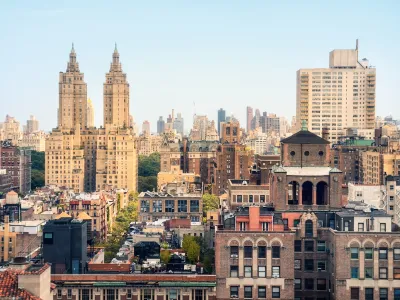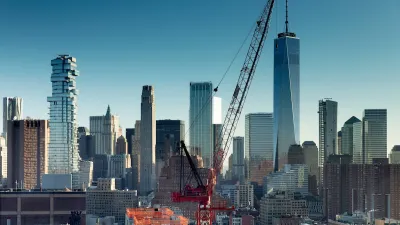The zoning reform package dubbed ‘City of Yes’ will likely yield uneven results, with many of the lowest-density neighborhoods exempted from new regulations.

An article in Bloomberg CityLab by Sarah Holder, Nacha Cattan, and Marie Patino outlines where new housing could be built in New York City under the recently adopted City of Yes zoning reform plan.
For the city’s landscape, it’ll mean mostly subtle changes — a few extra stories here, a granny flat there, or apartments carved from existing, undesirable office towers. In total, the city estimates about 80,000 new units will be built over the next 15 years.
Part of the plan tackles properties near transit stations, which will be allowed to add up to five stories in certain areas. Buildings with ground-floor retail will be able to add up to four stories of housing in commercial corridors. However, restrictions still apply in some of the city’s lowest-density neighborhoods, including parts of Riverdale in the Bronx and Floral Park in Queens.
City of Yes also permits accessory dwelling units — with restrictions in low-density, historic, and flood-prone areas. “Those kinds of limitations will steeply limit the amount of ADUs that can be built, according to the Regional Plan Association. It estimates under 20,000 ADUs will be built over the next 15 years, less than half of the amount envisioned by the original proposal, which didn’t have as many parameters.”
The new rules seek to make office conversion easier by allowing buildings built before 1991 to be converted, which the city expects will yield 20,000 new units of housing.
FULL STORY: Where New York City's Zoning Reform Will Add Housing

Maui's Vacation Rental Debate Turns Ugly
Verbal attacks, misinformation campaigns and fistfights plague a high-stakes debate to convert thousands of vacation rentals into long-term housing.

Planetizen Federal Action Tracker
A weekly monitor of how Trump’s orders and actions are impacting planners and planning in America.

Chicago’s Ghost Rails
Just beneath the surface of the modern city lie the remnants of its expansive early 20th-century streetcar system.

Bend, Oregon Zoning Reforms Prioritize Small-Scale Housing
The city altered its zoning code to allow multi-family housing and eliminated parking mandates citywide.

Amtrak Cutting Jobs, Funding to High-Speed Rail
The agency plans to cut 10 percent of its workforce and has confirmed it will not fund new high-speed rail projects.

LA Denies Basic Services to Unhoused Residents
The city has repeatedly failed to respond to requests for trash pickup at encampment sites, and eliminated a program that provided mobile showers and toilets.
Urban Design for Planners 1: Software Tools
This six-course series explores essential urban design concepts using open source software and equips planners with the tools they need to participate fully in the urban design process.
Planning for Universal Design
Learn the tools for implementing Universal Design in planning regulations.
planning NEXT
Appalachian Highlands Housing Partners
Mpact (founded as Rail~Volution)
City of Camden Redevelopment Agency
City of Astoria
City of Portland
City of Laramie





























